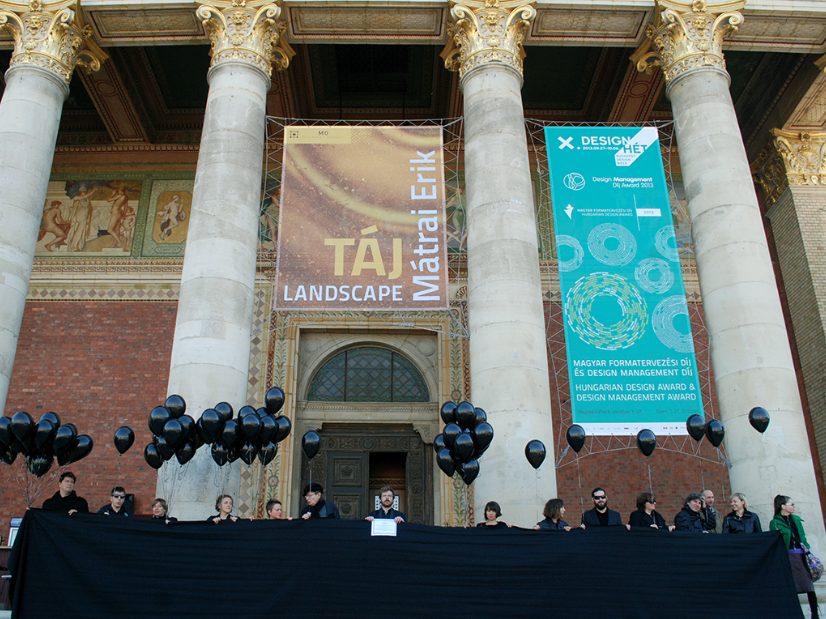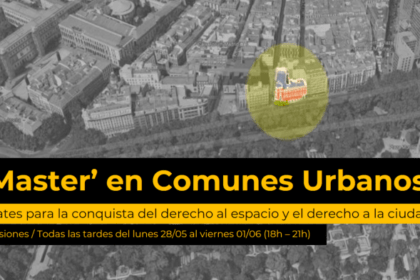Kulturkampf or Kulturchaos?: New (Dis)orders in Contemporary Hungarian Cultural Politics
Kata Benedek and Ágnes Básthy
“Frida Kahlo exhibit criticised in Hungary for ‘promoting communism’.” Similar headlines have popped up in the international press since Reuters reported on a series of op-eds, written by Árpád Szakács and published in pro-government newspaper Magyar Idők, that harshly criticized the Frida Kahlo exhibition at the Hungarian National Gallery. These headlines imply that autonomous cultural institutions are under attack by the right-wing government in Hungary, while in reality the director of the National Gallery is no less loyal to the governing party than the editor of Magyar Idők. In our short essay, we attempt to provide some insight into the inconsistencies of the Hungarian government’s cultural politics from 2010 to the present day.
1. Cultural politics without program
Since the fall of the socialist regime, the Hungarian cultural field has been dominated by a left-liberal intellectual elite, whose idea of modern culture falls in line with international cultural trends as well as with European liberal values and politics.
When the FIDESZ party won the 2010 elections, prime minister Viktor Orbán interpreted it as a revolutionary moment, the beginning of a new political era that required a new, national cultural canon to replace the so-called “left-liberal cultural dictatorship.” Without a precisely defined goal, theoretical frame, or practical guideline for the new order, the declaration of “Kulturkampf” opened a new front in the government’s symbolic war, one which blurred the line between appointed enemies. While heavily attacking the participants and practices of the long-established infrastructure, the claim of a new cultural hegemony remained a pugnacious but pliable promise, a heavy instrument of politics which could be applied various ways in the diversified cultural field due to the receivable political interest.
Since 2010, the government has focused on grand gestures while marginalizing professional concerns. For example, the forthcoming building of a new museum district in the capital assures the wider public of the government’s unconditional commitment to Hungarian culture. By erecting hundreds of new public monuments and restoring urban spaces, they have created local engagement while supporting the historical narratives favored by the FIDESZ. It was also a symbolic act when they installed a formerly marginal nationalist organization, the MMA (Hungarian Academy of Arts), as the main public body of the visual arts and appointed party-loyal directors to each relevant art institution in order to guarantee that the new cultural elite took charge.
It would be pointless to search for further cohesive change in the state museum’s profiles. Due to the absence of an elaborated cultural program, it is up to the appointees to interpret their newly given function and opportunities. This has led to a plurality of contingent institutional strategies, which means that the profit-oriented approach of the FIDESZ-appointed director-general of the National Gallery, László Baán, is just as valid as the ethnocentric ultra-conservative views of the late-president of the MMA. This surely does not add up to the promised shift in the cultural paradigm.
Is this a failure of the government’s Kulturkampf?
Hardly. The FIDESZ is more interested in maintaining the permanent culture war than winning it. Creating chaos on the field has been paying off. When Szakács listed the National Gallery’s Kahlo exhibition among other cultural events based on the artists’ or the organisers’ real or assumed “oppositional” political engagement, instead of addressing the contradiction between the government’s communication and practice regarding the new hegemony, he accused the left-liberal lobby of ruling the Hungarian cultural field. But where is the opposition in this picture?
2. Agency and impotence
The state is the main financial source for the whole cultural field. The funding it provides is split disproportionately between the MMA—which does not create any meaningful independent cultural production—and the rest of the visual arts sector; the process generates precarious working conditions for the latter. Under these circumstances, and due to the economic vulnerability and moral judgement over their participation in the official cultural institutional system, it is hard to measure the left-liberal cultural elite’s responsibility and agency in the development of the present situation.
While financially maintaining professional cultural life, the current regime treats cultural professionals not as partners but as enemies, excluding them from the cabal-like commissions that issue verdicts about funding, appointments, public collections, estate management, etc. Professionals can express their concerns—which they consistently do—only after the newly enforced resolutions have come into effect. Since the government has gained control over the majority of state and public media, and taking advantage of public indifference towards the technicalities of cultural infrastructure, it can easily frame the reasoning of cultural professionals as mere politic griping, further fueling the symbolic war.
The self-victimization of oppositional positions is not enough to find a solution for the deep economic and infrastructural crisis, which was exacerbated by the world economic crisis in 2008 and pushed to the extreme by the recent Hungarian government. The discontinuity and insecurity of funding, which has made a stable level of cultural production impossible, and the mediation of this production are some of the causes of the disinterest in the wider soci ety. The deeper deficiencies in the education system and the relatively low spending power of the lower and middle classes are also part of this problem. Hence it is important, on the one hand, to discuss the consequences of transformations in the consumption of culture and, on the other, to analyze the legitimacy of state-funded culture in this context if we are to respond adequately to the new challenges.
The cultural sector developed a profile of urban, sometimes elitist, and progressive civic values and aligned their projects with the directives of the EU funding system, which exists in contradiction with the experiences of the rural population. The cultural politics of the FIDESZ attempted to reframe and exploit these demands with a nationalist rhetoric while at the same time maintaining an institutional system of culture which satisfied the progressive liberal demands of the international art scene.
However, this sector is extremely underfunded, and its cultural workers have to deal with precariousness; this is the part of the cultural production that, in part, still maintains the image of a pluralistic, democratic country. Culture in our society has of late been used and abused as a political tool rather than as a common asset. We should redefine culture as a common asset for a political reason, because when citizens see culture as a dangerous battlefield of values among the elite, and not as a space for negotiating ideas or experiences beyond (the always relative and temporary) “rational” aspects of life, we can’t expect them to develop an interested and responsible attitude toward it. This redefinition presumes a deep transformation of attitudes and structural conditions; but the first step has to be an intensive and long-term negotiation among the cultural workers about what kind of cultural infrastructure is needed.
Kata Benedek is a Berlin based independent art journalist, art critique and researcher from Budapest, Hungary. She graduated with an MA in Art History from the Eötvös Loránd University, Budapest (2016) focusing on late 1960-1970s new leftist art practices in Eastern and Western Europe. Her further fields of academic interest are the LGBTQ visibility in visual arts in the socialist and post-socialist Central and Eastern European region and the strategies of contemporary cultural politics in the post-socialist countries concerning the representation of sexual and ethnic minorities and the intersections of public space, public art, public memory and politics.
Ágnes Básthy is a freelance cultural organizer and publicist based in Budapest. She graduated from University of Szeged (SZTE) in 2011 where she studied Sociology (MA) with focus on Sociology of Art. Later, in 2014, she graduated in Photograpy at the University of Kaposvár (KE). She wrote her master thesis in sociology of art and focused on photography in the socialist era (1957-1989). Since 2014, she is a member of Studio of Young Photographers (SYP /FFS) and Studio of Young Artists Association (SYAA/FKSE). In the latter she was a board member between 2015 and 2018. She regularly publishes articles, organizing events, participates in different projects in interdisciplinary framework.











